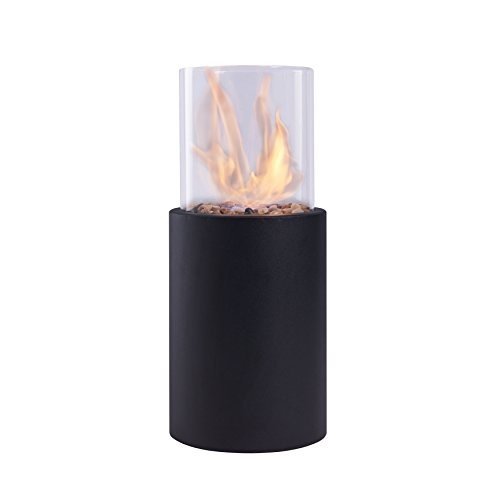
Titus Purcell @ fireplaces3227 Narys nuo: 20 Jun 2025
Apie mane
Guide To Best Value Fireplaces: The Intermediate Guide For Best Value Fireplaces
Best Value Fireplaces: An In-Depth Guide
The fireplace has long been considered the heart of a home, supplying heat, atmosphere, and a centerpiece for celebrations. However, navigating through different choices can be overwhelming, particularly with budget restraints in mind. This post provides an informative guide on the very best value fireplaces, detailing their types, features, and benefits to help property owners make a sensible option.
Kinds of Fireplaces
Fireplaces are available in a variety of designs and types, each with different qualities, costs, and benefits. Here's a detailed appearance at the most common types of fireplaces readily available in the market today.
| Kind of Fireplace | Description | Average Cost | Pros | Cons |
|---|---|---|---|---|
| Wood-Burning | Burn logs to create heat and atmosphere. | ₤ 1,500 - ₤ 5,000 | Authentic experience, natural heat | Needs regular maintenance, less efficient |
| Gas Fireplaces | Utilizes gas or lp to produce heat. | ₤ 2,000 - ₤ 5,000 | Easy to utilize, cleaner than wood | Restricted to gas supply, installation expenses |
| Electric Fireplaces | Mimics flames with LED innovation and produces heat via electricity. | ₤ 200 - ₤ 3,000 | Easy installation, installation flexibility | Less authentic feel, higher operating expense |
| Pellet Stoves | Usage compressed wood or biomass pellets, supplying an environmentally friendly alternative. | ₤ 3,000 - ₤ 4,500 | Efficient, low emissions | Needs electrical energy to run, requires storage for pellets |
| Ethanol Fireplaces | Burns ethanol fuel, producing flames that do not need a chimney. | ₤ 300 - ₤ 2,500 | No vents needed, portable | Higher fuel cost, safety issues |
Aspects to Consider When Choosing a Fireplace
Choosing the best fireplace is not just about looks; it likewise includes useful considerations. Here are vital elements to bear in mind:
1. Spending plan
- Determine just how much you want to spend. Bear in mind that installation and upkeep expenses can include up.
2. Area and Size
- Ensure the fireplace fits well within the room, thinking about both the area offered and the heating requirements.
3. Fuel Type
- Pick the fuel source based on accessibility, cost, and the kind of ambiance you want to attain.
4. Efficiency
- Choose for units with high-efficiency rankings to ensure you are getting the most value for your money in terms of heat output.
5. Aesthetic Appeal
- Pick a design and style that complements existing design and enhances the overall appeal of the area.
6. Laws
- Know local guidelines, allows, and structure codes that may impact your fireplace installation.
Top Best Value Fireplaces
Based upon client evaluations, professional opinions, and total value for money, here are a few of the best value fireplaces currently offered in the market:
1. DuraVent Pellet Stove
- Type: Pellet
- Average Cost: ₤ 2,000
- Emphasizes: Highly efficient with low emissions, making it an exceptional choice for environmentally-conscious homeowners.
2. Napoleon B36NTR-1
- Type: Gas
- Typical Cost: ₤ 2,500
- Highlights: This fireplace is visually attractive and highly efficient, with a sleek design and adjustable flame.
3. Duraflame Electric Heater Stove
- Type: Electric
- Average Cost: ₤ 200
- Emphasizes: Affordable and portable, ideal for smaller spaces or including ambiance to a room without long-term setup.
4. Real Flame Juliet Gel Fireplace
- Type: Ethanol
- Average Cost: ₤ 300
- Emphasizes: A trendy option for modern areas that needs no venting, making it flexible and simple to install.
5. Vogelzang VG5790
- Type: Wood-Burning
- Average Cost: ₤ 800
- Emphasizes: Offers a traditional wood-burning experience with a smooth modern design, ideal for those who cherish the timeless atmosphere.
Regularly Asked Questions (FAQs)
Q1: What is the most cost-effective fireplace alternative?
A1: Electric fireplaces tend to be the most cost-efficient in terms of preliminary purchase price and setup, but can have higher operating expense compared to gas or pellet units.
Q2: Are gas fireplaces safer than wood-burning fireplaces?
A2: Yes, gas fireplaces generally produce fewer emissions and pose a lower danger of chimney fires as they don't produce creosote like wood-burning systems.
Q3: Can I install a fireplace myself?
A3: While some electric fireplaces enable for simple self-installation, other types, particularly gas and wood-burning designs, usually require professional installation due to venting and safety concerns.
Q4: How do I maintain my fireplace?
A4: Regular maintenance includes cleaning the chimney (for wood-burning fireplaces), checking for gas leaks (in gas units), and making sure correct ventilation for electric designs.

Q5: Is an ethanol fireplace a good option?
A5: Ethanol fireplaces are appealing for their modern design and ease of setup. Nevertheless, they can be less efficient and more pricey to operate long-term compared to other fuel types.
Choosing a value fireplace that satisfies your aesthetic preferences and useful needs involves extensive research study and factor to consider. By understanding different types of fireplaces, their associated expenses, and advantages, house owners can make educated choices that will not only fit their budget but also boost the warm and welcoming environment of their homes. Whether going with an electric, gas, wood-burning, pellet, or ethanol design, the ideal fireplace awaits to change your home.


